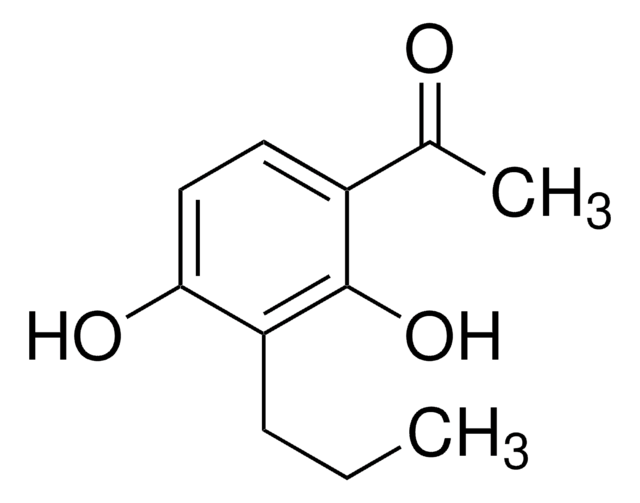Wichtige Dokumente
481521
Hexaammincobalttrichlorid
99%
Synonym(e):
Cobalthexammintrichlorid, Hexaammincobalt(III)-chlorid
About This Item
Empfohlene Produkte
Qualität
for analytical purposes
Qualitätsniveau
Assay
99%
Form
powder
mp (Schmelzpunkt)
217 °C (lit.)
Löslichkeit
H2O: slightly soluble(lit.)
ethanol: insoluble(lit.)
Dichte
1.71 g/mL at 25 °C (lit.)
SMILES String
N.N.N.N.N.N.[Cl-].[Cl-].[Cl-].[Co+3]
InChI
1S/3ClH.Co.6H3N/h3*1H;;6*1H3/q;;;+3;;;;;;/p-3
InChIKey
JXBGZYGSWFSYFI-UHFFFAOYSA-K
Suchen Sie nach ähnlichen Produkten? Aufrufen Leitfaden zum Produktvergleich
Verwandte Kategorien
Allgemeine Beschreibung
Anwendung
- Rhenium (VII) compounds as inorganic precursors for the synthesis of organic reaction catalysts: Investigates the potential of Hexaamminecobalt(III) chloride as a replacement for commercial products in catalyzing organic reactions, highlighting its role in synthetic chemistry (K Leszczyńska-Sejda et al., 2019).
- In situ formation of a molecular cobalt (iii)/AgCl photocatalyst for visible-light water oxidation: Discusses the synthesis and application of Hexaamminecobalt(III) chloride in forming a novel photocatalyst for water oxidation, a critical process in solar energy utilization (H Mogi et al., 2021).
Signalwort
Danger
H-Sätze
Gefahreneinstufungen
Aquatic Chronic 4 - Carc. 2 - Resp. Sens. 1 - Skin Sens. 1
Lagerklassenschlüssel
11 - Combustible Solids
WGK
WGK 3
Flammpunkt (°F)
Not applicable
Flammpunkt (°C)
Not applicable
Persönliche Schutzausrüstung
dust mask type N95 (US), Eyeshields, Gloves
Hier finden Sie alle aktuellen Versionen:
Besitzen Sie dieses Produkt bereits?
In der Dokumentenbibliothek finden Sie die Dokumentation zu den Produkten, die Sie kürzlich erworben haben.
Artikel
Plasmonic nanoparticles have unique optical properties that can be tailored to suit a variety of applications in the biotechnology1–8 and electronics9–16 industries.
Global Trade Item Number
| SKU | GTIN |
|---|---|
| 481521-100G | 4061838147431 |
| 481521-25G | 4061832388670 |
Unser Team von Wissenschaftlern verfügt über Erfahrung in allen Forschungsbereichen einschließlich Life Science, Materialwissenschaften, chemischer Synthese, Chromatographie, Analytik und vielen mehr..
Setzen Sie sich mit dem technischen Dienst in Verbindung.









